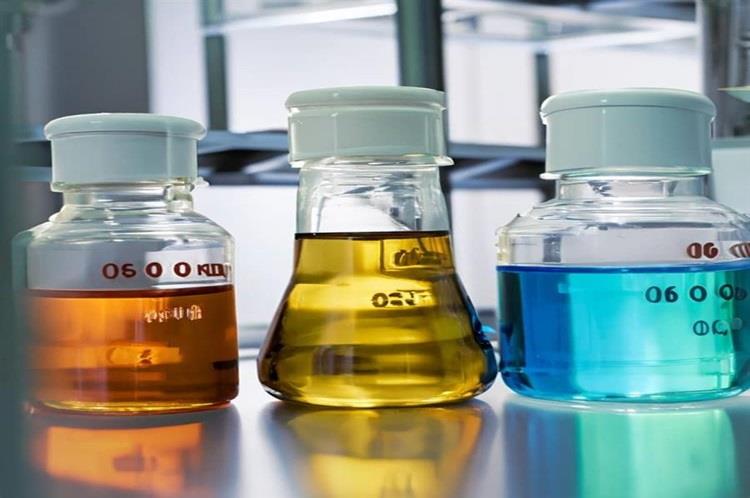
- 09 May 2024
- 2156 Views
What is Formic Acid?
Formic acid, represented by the chemical formula HCOOH, stands as the simplest type of carboxylic acid. It is distinguished by its notably sharp odor, similar to that of pungent vinegar. This naturally occurring organic compound is found in the secretions of several insects, most famously ants, which use it as a defense mechanism against predators. In its pure form, formic acid is a colorless liquid that is highly corrosive and reacts readily with most alcohols to form esters. It serves as an important substance in nature and industry due to its powerful preservative and antibacterial qualities, making it invaluable in food preservation as well as in medical and industrial applications.
History of Formic Acid
Historically, formic acid was first identified in the 15th century when an alchemist observed that distilling ants produced a pungent liquid. The name 'formic' itself is derived from the Latin word for ant, 'formica'. Throughout the ages, its extraction methods have been refined, transitioning from natural sources to more sophisticated synthetic processes to accommodate industrial demand. The evolution of formic acid production has mirrored the advancement in chemical engineering, reflecting its growing range of applications from simple insect deterrents to complex industrial and food preservatives.
Benefit and Risk of Formic Acid
Benefits:
- Preservative Qualities: Formic acid's ability to inhibit bacterial growth makes it a preferred choice for preserving various food products, ensuring they remain safe and fresh over extended periods.
- Agricultural Applications: In agriculture, it is used to control pathogens in livestock feed, which helps in improving overall farm hygiene and animal health.
- Industrial Uses: Beyond its antibacterial uses, it is crucial in the production of leather, where it helps in the tanning process, and in textiles, where it aids in dye fixation.
Risks:
- Corrosive Nature: Being a strong acid, it can cause significant damage to metals and can irritate the skin, eyes, and mucous membranes upon contact.
- Health Hazards: Exposure to high concentrations of formic acid can lead to toxic effects, including respiratory and metabolic complications, necessitating careful handling and usage, especially in industrial settings.
Technical information of Formic Acid
| Property | Description |
|---|---|
| Molecular Formula | HCOOH |
| Molecular Weight | 46.03 g/mol |
| Density | 1.220 g/cm³ |
| Boiling Point | 100.8°C |
| Melting Point | 8.4°C |
| Solubility | Miscible with water, ethanol, diethyl ether |
Uses of Formic Acid in Different Industries
Formic acid's versatility is showcased in its array of uses across various sectors:
- Chemical Industry: It is pivotal as a reagent in chemical synthesis, where it is used to produce formate esters, essential in the fragrance and flavor industries.
- Cleaning Products: Its antibacterial properties are exploited in household cleaners and sanitizers, effectively eliminating harmful microbes.
- Pharmaceuticals: It serves as a preservative in pharmaceutical products, ensuring they remain free from bacterial contamination.
In the food industry specifically, formic acid is instrumental as a food preservative. It acts not only to prevent spoilage but also maintains the desired pH in processed foods, enhancing both their safety and taste profile.
Formic Acid in Lemon
Formic Acid in the Food Industry
In the context of the food industry, formic acid is particularly valued for its preservation capabilities. It is found naturally in several foods such as berries, honey, and as a by-product in fermented beverages like vinegar. It is also added to processed foods to extend shelf life, prevent microbial growth, and maintain optimal pH levels.
Natural Occurrence of Formic Acid in Foods
Formic acid is naturally present in several types of food that are commonly consumed on a daily basis. Notably, it is found in:
- Fruits: Many berries, including strawberries and raspberries, contain formic acid, which contributes to their tart flavor and acts as a natural preservative.
- Honey: As a natural product made by bees, honey contains formic acid, which bees also use as a defense mechanism within their hives.
- Fermented Products: In items such as vinegar and some cheeses, formic acid forms as a by-product of the fermentation process, enhancing flavor and inhibiting unwanted bacterial growth.
Formic Acid as an Additive in Processed Foods
Beyond its natural presence, formic acid is added to various processed foods to enhance their longevity and safety:
- Preserved Meats: It is often used in processed meat products to prevent the growth of bacteria and prolong shelf life.
- Dairy Products: Certain cheeses and dairy items benefit from formic acid as it helps in maintaining stability and preventing spoilage.
- Beverages: Soft drinks and other non-alcoholic beverages sometimes include formic acid to adjust acidity and act as a preservative.
Testcing Formic Acid
Advantages of Using Formic Acid in Food Processing
The incorporation of formic acid into food products brings several key advantages:
- Extended Shelf Life: By inhibiting microbial growth, formic acid significantly extends the shelf life of perishable items, reducing food waste.
- Food Safety: It helps in controlling pathogens that could cause foodborne illnesses, thereby enhancing the safety of the food supply.
- Flavor Preservation: By maintaining optimal pH levels, formic acid helps in preserving the natural flavors of foods, especially in fruit-based products.
Conclusion
Understanding formic acid’s role and benefits in various settings, particularly in food, highlights its importance. Recognizing both its natural occurrence in foods and its applications in food preservation helps consumers make informed decisions regarding their dietary choices and food storage practices.
Buy Formic Acid
If you're looking to purchase high-quality formic acid suitable for a range of applications, including food preservation, visit our Formic Acid product page
